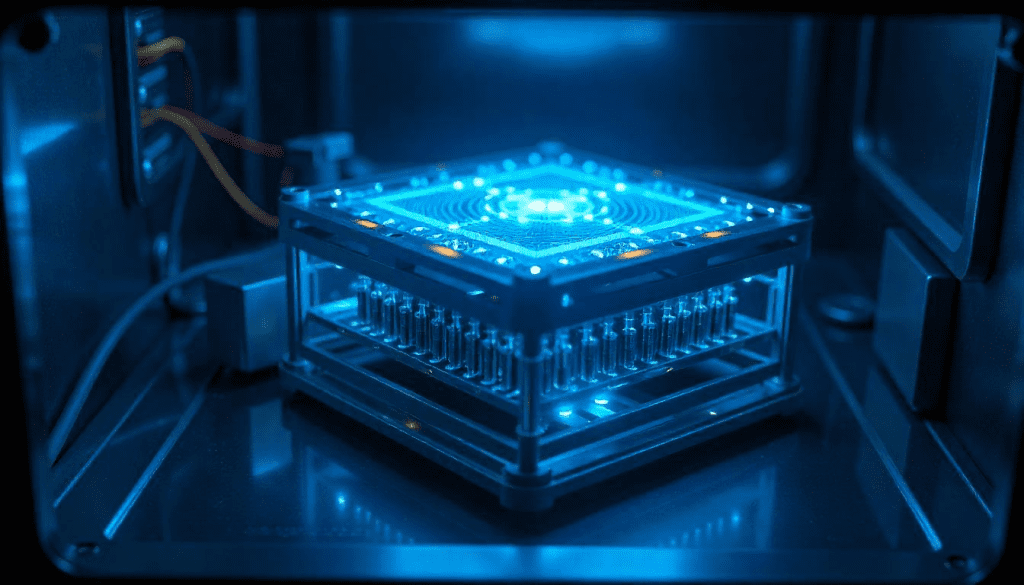Quantum computing is no longer a concept confined to science fiction—it’s becoming a reality. While this revolutionary technology promises advancements in problem-solving, drug discovery, and artificial intelligence, it also presents a significant cybersecurity threat. The immense processing power of quantum computers could soon dismantle the encryption methods that safeguard sensitive data today. This article explores the potential risks posed by quantum computing and what steps we need to take to mitigate them.

How Quantum Computing Differs from Classical Computing
Traditional computers use bits, which represent either a 0 or a 1. In contrast, quantum computers leverage quantum bits, or qubits, which can exist in both states simultaneously due to a phenomenon called superposition. Additionally, qubits can be entangled, meaning the state of one qubit is directly linked to another, no matter the distance between them. These principles allow quantum computers to solve complex problems exponentially faster than today’s most powerful supercomputers.
While this advancement holds enormous potential, it also threatens the very foundation of current cybersecurity systems. Encryption algorithms that take traditional computers years to crack may be broken within minutes by quantum-powered machines.
The Risk to Current Encryption Methods
Modern cybersecurity relies heavily on encryption techniques such as RSA (Rivest-Shamir-Adleman) and ECC (Elliptic Curve Cryptography). These methods depend on the difficulty of factoring large prime numbers or solving complex mathematical problems, making them practically unbreakable by today’s computers. However, quantum computers, equipped with algorithms like Shor’s algorithm, can solve these problems rapidly, rendering current encryption obsolete.
If malicious actors gain access to quantum computing capabilities, they could easily decrypt private communications, banking transactions, and confidential government data, leading to a cybersecurity catastrophe.
The “Harvest Now, Decrypt Later” Threat
One of the most pressing concerns is the strategy known as “harvest now, decrypt later.” Cybercriminals and nation-states are already collecting encrypted data in anticipation of future quantum breakthroughs. Once quantum computers become powerful enough, they can retroactively decode this stored information, exposing decades of sensitive communications, trade secrets, and classified government intelligence.
Organizations and individuals cannot afford to ignore this looming threat. The data we encrypt today must remain secure in the future, which means action is required now to ensure long-term cybersecurity.
Industries at Risk
The impact of quantum computing will be felt across multiple sectors:
- Financial Sector: Online banking, digital transactions, and cryptocurrency rely on encryption to secure user data. A quantum-powered attack could collapse trust in digital financial systems overnight.
- Healthcare: Medical records, drug research, and genetic data are all vulnerable. Quantum attacks could compromise patient confidentiality and disrupt pharmaceutical advancements.
- Government and Defense: National security relies on encrypted communications and secure databases. If foreign adversaries develop quantum decryption before defensive measures are in place, it could lead to espionage at an unprecedented scale.
- Critical Infrastructure: Power grids, transportation systems, and water supply networks rely on secure communications. A quantum cyberattack could disrupt essential services, posing risks to public safety.
Preparing for the Quantum Threat
Despite the potential risks, there are proactive steps organizations can take to prepare for the quantum era:
- Adopt Post-Quantum Cryptography (PQC): Researchers are developing quantum-resistant encryption methods to replace vulnerable algorithms. The National Institute of Standards and Technology (NIST) is working on standardizing PQC to ensure future security.
- Quantum Key Distribution (QKD): Unlike traditional encryption, QKD uses the principles of quantum mechanics to generate secure communication keys, making interception nearly impossible.
- Hybrid Cryptography: Organizations can start implementing a mix of classical and quantum-resistant encryption methods to ensure gradual transition and backward compatibility.
- Continuous Monitoring & Adaptation: Cybersecurity is an evolving field, and organizations must stay informed about the latest developments in quantum computing and cryptographic security.
Challenges in Transitioning to Quantum-Safe Security
While moving toward quantum-resistant encryption is necessary, it comes with challenges:
- Complex Implementation: Updating cryptographic infrastructure across global networks is a resource-intensive process.
- Compatibility Issues: New encryption methods must be seamlessly integrated into existing systems.
- Cost of Transition: Businesses and governments must invest in upgrading cybersecurity measures to withstand quantum threats.
Despite these obstacles, organizations that delay quantum security preparations risk exposing critical data to future quantum attacks.
Collaborative Efforts for a Secure Future
Addressing the risks posed by quantum computing requires global collaboration. Governments, tech companies, and cybersecurity experts must work together to develop and implement quantum-resistant security measures. Initiatives like the Quantum-Safe Cryptography Standardization by NIST and research into post-quantum cryptography are essential steps toward securing our digital world.
Conclusion
Quantum computing has the potential to reshape industries and solve complex problems that classical computers cannot. However, this same power threatens the encryption methods that currently protect sensitive information. The race to develop quantum-resistant security is on, and organizations must act now to stay ahead of potential cyber threats. By adopting new cryptographic standards and staying informed about quantum advancements, we can ensure a secure future in the digital age.
The quantum era is coming—will we be ready?